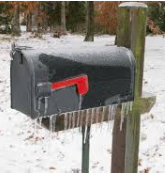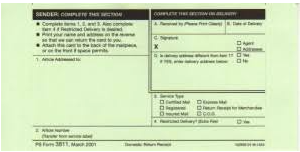It's pretty straightforward, really. You will be actually filing instead of "agreeing to use a data interchange service in lieu of filing". Filing has legal force, which is why they stand on the formality of paper. Not least, IRS cannot reject a filing as they can with e-file, they can only disagree, so you can't be tardy with real filing.
1 -- Print the form.
2 -- write your Social Security number on all pages that ask, and sign it.
3 -- Put it in an envelope
4 -- put stamps on it
5 -- Leave it for your mailman to take if secure, drop in any mailbox, or take it to the Post Office.
If you are overseas, unfamiliar with mailing, have full sheet-sized envelope, or more than 3 sheets of paper, you may need help or more than the normal single stamp. If that's the case:
- Get in line and take it to a postal clerk. It'll be less busy on weekdays, earlier in the day, and in sleepy small-town post offices.
- Weigh the package yourself and ask your nation's post office website (e.g. USPS.com) what the postage will be from there. You are allowed to overstamp it, so if you have $1.39 postage just use 3 common stamps.
- In the US, take it to the post office and buy your postage at one of the machines that weigh your envelope and has a dimension chart.
- You can also consider services like Certified Mail that will prove the IRS received it. You must pay extra for the green paper card: the web-based delivery confirmation service is worthless because it's only archived for 90 days, and IRS disputes are slower than that.




